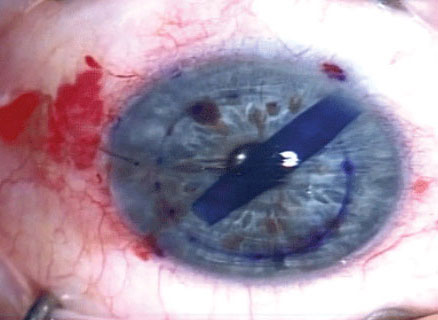 |
| This study identified several risk factors for increased keratoplasty. Photo: Aaron Bronner, OD. Click image to enlarge. |
A recent retrospective cohort study identified Black race, government-based insurance plans and smoking as independent factors associated with repeat keratoplasty. Other factors correlated with an increased risk included history of glaucoma, glaucoma surgery, prior graft failure and bullous keratopathy as the surgical indication.
The researchers used the Academy of Ophthalmology’s IRIS (Intelligent Research in Sight) Registry to identify patients 18 and older who underwent endothelial keratoplasty. The main outcome measures for this study were risk factors for repeat keratoplasty and complication rates following the procedure. They determined the probability of repeat keratoplasty and then tied it to risk factors.
Of the 59,344 procedures identified in the Registry, 30,600 endothelial keratoplasty procedures met the inclusion criteria for the analysis. The study found that the probability of repeat keratoplasty was 17.4% at five years. The authors identified several risk factors for repeat keratoplasty including postoperative re-bubbling, prior failed graft and bullous keratopathy vs. Fuchs’ dystrophy as the surgical indication and subsequent routine cataract surgery. Other risk factors included subsequent, prior or concurrent glaucoma surgery and history of the condition.
The researchers found that Medicaid, military/government, Medicare Fee-for-Service and Medicare-managed insurances compared with private insurance were associated with an increased risk of undergoing repeat keratoplasty. Black vs. white race and smoking were also correlated with increased risk.
Given the large, diverse patient and surgeon populations of the study, this data can be used to improve perioperative patient counseling, selection and planning, according to the study authors. “For example, for all comers with Fuchs’ dystrophy, the five-year cumulative rate of repeat endothelial keratoplasty can be estimated at 11% and for patients with bullous keratopathy, 27.8%,” they wrote in their paper for AJO. “Socioeconomic and racial disparities affect the outcomes of endothelial keratoplasty, just as they do for many other health-related interventions.”
Son HS, Lum F, Li C, et al. Risk factors for repeat keratoplasty after endothelial keratoplasty - an IRIS registry analysis. Am J Ophthalmol. June 20, 2022. [Epub ahead of print]. |

